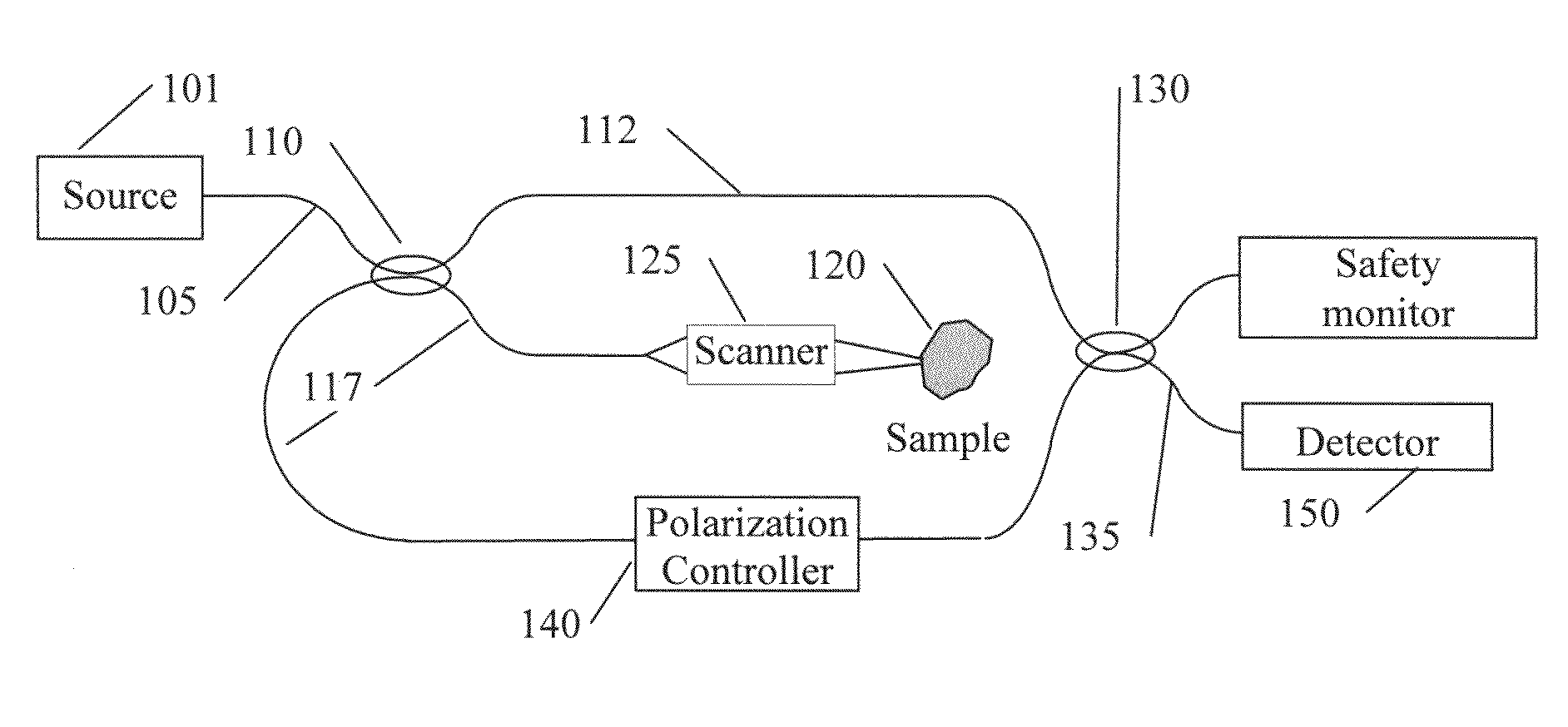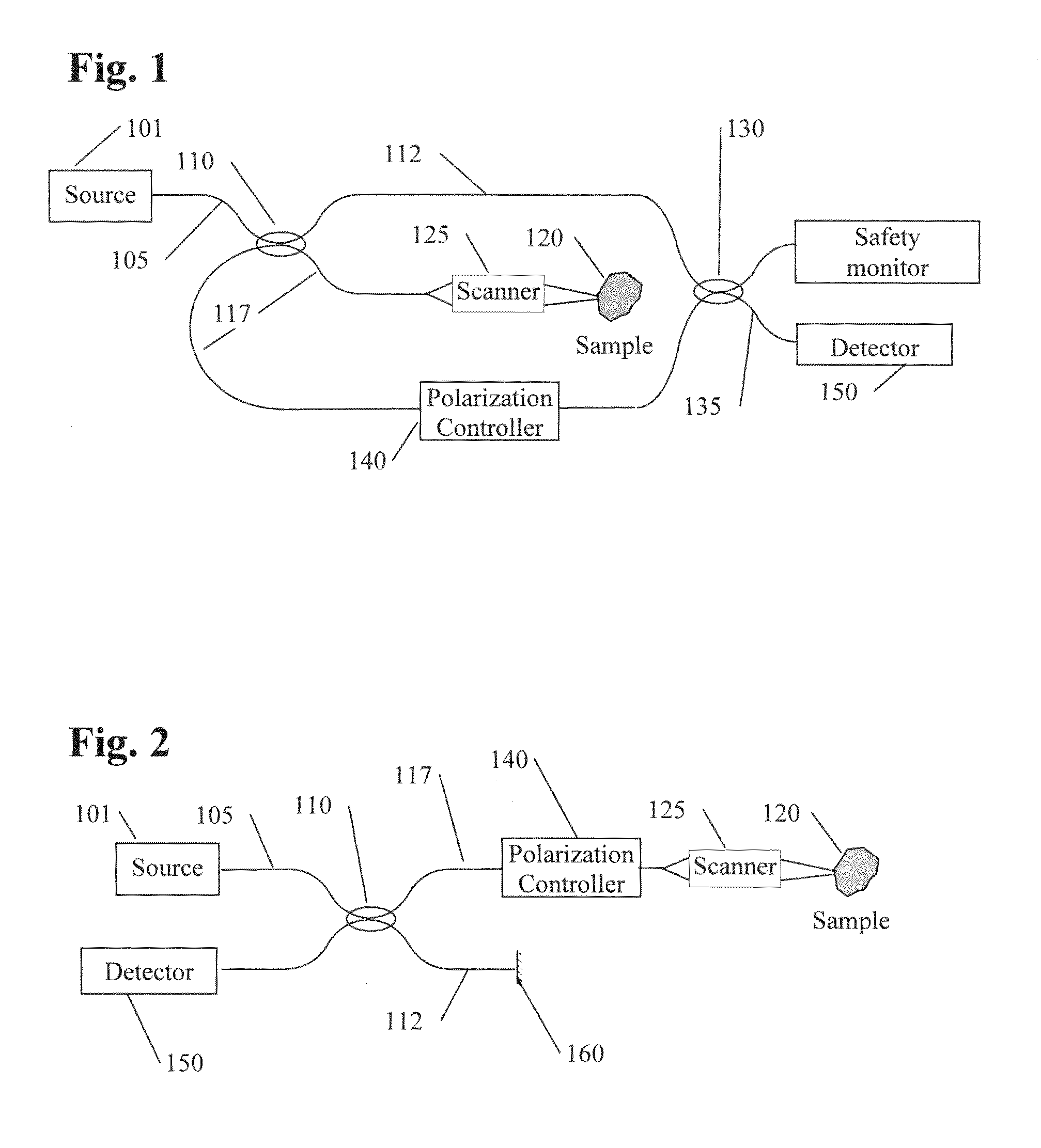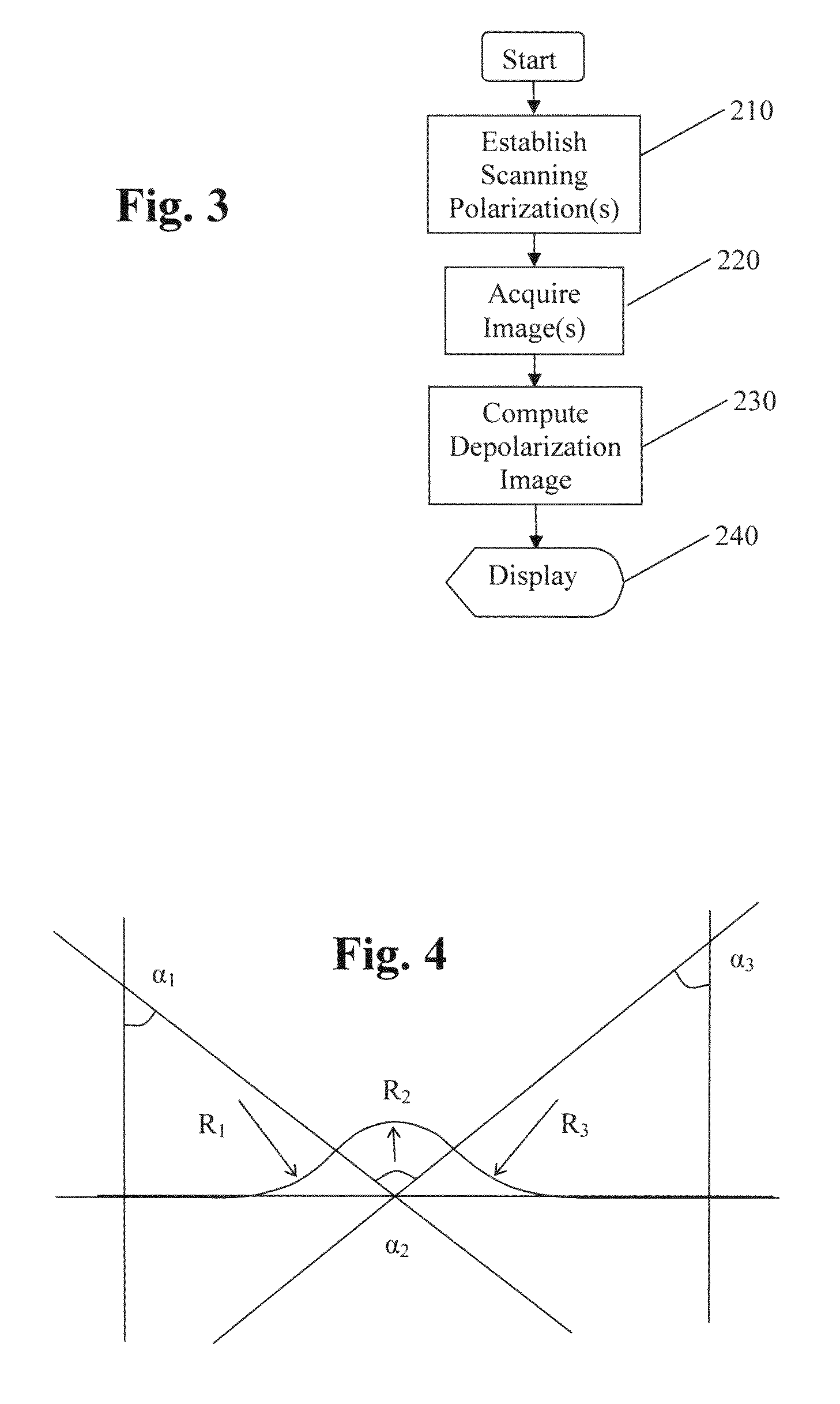Imaging of polarization scrambling tissue
a technology of polarization scrambling and imaging tissue, applied in the field of depolarization imaging, can solve the problems of visual impairment, loss of vision, and inability to resolve each scatterer
- Summary
- Abstract
- Description
- Claims
- Application Information
AI Technical Summary
Benefits of technology
Problems solved by technology
Method used
Image
Examples
Embodiment Construction
[0024]The embodiments, examples and descriptions illustrate the principles of the invention and its practical applications and are not a definition of the invention. Modifications and variations of the invention will be apparent to those skilled in the art. The claims define the scope of the invention and include known equivalents and equivalents unforeseeable at the time of filing of this application.
[0025]One embodiment of the invention is an apparatus for computing a tomographic image of a depolarizing tissue. One such apparatus includes an optical coherence tomography (OCT) device comprising of an interferometer like the one depicted in FIG. 1 having a source arm 105, a reference arm 112, a sample arm 117 (here shown in two parts since the splitting coupler 110 and combining coupler 130 are separate and distinct) and a detector arm 135. A source 101, typically a superluminescent diode (SLD), of at least partially spatially coherent light is coupled to the source arm 105. A polar...
PUM
 Login to View More
Login to View More Abstract
Description
Claims
Application Information
 Login to View More
Login to View More - R&D
- Intellectual Property
- Life Sciences
- Materials
- Tech Scout
- Unparalleled Data Quality
- Higher Quality Content
- 60% Fewer Hallucinations
Browse by: Latest US Patents, China's latest patents, Technical Efficacy Thesaurus, Application Domain, Technology Topic, Popular Technical Reports.
© 2025 PatSnap. All rights reserved.Legal|Privacy policy|Modern Slavery Act Transparency Statement|Sitemap|About US| Contact US: help@patsnap.com



